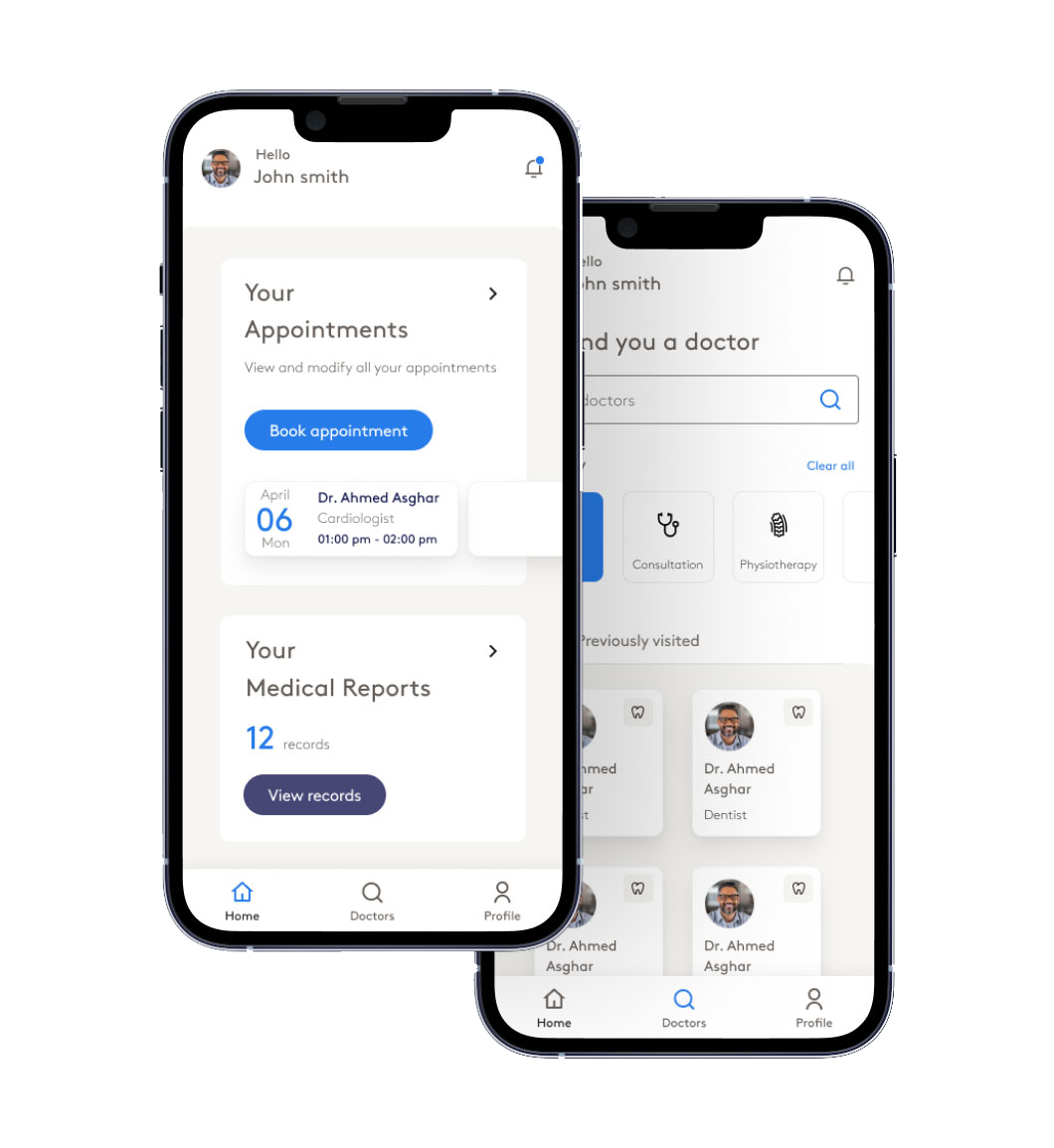Cloudpital # 1 is one of the top HIS and health care facilities continue to take on managing quality patient care coupled with complex administrative, clinical, and financial processes. It is against this background that the use of HIS has become an indispensable tool by hospitals to simplify these challenging issues by streamlining their business processes, improving data integrity, and facilitating effective coordination between departments. It is no longer something to be wished for but a necessity in any modern healthcare setting that makes hospitals work smoothly and improves patient care quality.
In this blog, we go over the core functionalities and benefits of a HIS as we witness how this technology changes healthcare facilities and opens the door to better patient and provider outcomes.
Cloudpital # 1 HIS

What is a Hospital Information System?
A HIS generally refers to a comprehensive, integrated design meant to handle all aspects of how the business of a hospital operates, from clinical, administrative, financial, and legal duties to ensure smooth data dissemination among the various departments. The potential advantages of HIS would include patient information access, management of medical records, scheduling of appointments, processing of billing, and improved care for patients.
One strength of HIS is the combination of several functions within the same roof, which eliminates disintegrated systems and manual operations. This would lead to more effective data management, a better utilization of resources, and better interdepartmental communication.
Key Features of Hospital Information Systems
Hospital Information Systems come with a wide range of features that have been designed to smooth hospital operations, make it more efficient, and improve patient care. Some of the key components that are most important to a modern HIS include:
Electronic Health Records (EHR)
EHRs are considered the primary provision of HIS. One such electronic medical record is an EHR, which is essentially a digital version of the traditional paper-based medical record, containing one patient’s real-time history, and it is accessible to authorized healthcare providers. An EHR module can ensure safe storage and retrieval of relevant patient information, amongst other things, like personal profile (such as age, gender, contact details), medical history including but not limited to diagnosis, allergies, previous treatments, medications/prescriptions, laboratory reports, and imaging reports, treatment plans and progress notes.
EHRs are highly important in maintaining continuity of care, for the information of a patient will be accurate and up-to-date, given to doctors, nurses, and specialists. This, in turn improves their decision-making and reduces the risk for medical errors.
Patient Management System
The HIS includes the Patient Management System, which administrates and handles many patient-related administration tasks. These involve;
- Appointment and reminders
- Check-in and registration of patients
- Bed management in inpatient departments
- Discharge planning
This method also allows hospitals to reduce wait times, improve patient flow, and optimize resources by automating their processes. For the most part, this can really enhance the experience for the patients and the operational efficiency as well.
Clinical Decision Support System (CDSS)
CDSS is designed to help healthcare providers make well-informed decisions with data-driven insights. CDSS analyzes all patient data, medical histories, and clinical guidelines which provide health care professionals with evidence-based recommendations about how they should diagnose, treat, and care for patients.
CDSS can also warn a potential drug interaction, allergic reaction, or other risk factors, which helps doctors avoid medication prescription or treatment recommendation errors. Advanced algorithms and medical data ensure that using CDSS significantly enhances the accuracy in the diagnosis and the appropriate treatment of patients.
Laboratory Information System (LIS)
HIS integrates with a LIS, which means that the whole process of laboratory testing-the collection and processing of samples through to reporting of results-may be integrated. This system allows test results to be delivered promptly and accurately, with minimal intervention from the human side.
LIS also facilitates the laboratory workflow in such a manner that all the tests are processed quickly and through the EHR system, results are sent directly to the primary attending healthcare providers, which speeds up the diagnosis and treatment process without any delays in these critical care settings.

Radiology Information System (RIS)
Such a radiology Remote Patient Monitoring system would manage workflow in all aspects related to diagnostic imaging: scheduling for appointments, recording of patient images, and reporting results. The RIS interfaces with the Picture Archiving and Communication Systems, which also enable healthcare providers to store, retrieve, and analyze diagnostic images including X-rays, MRIs, and CT scans.
This connectivity will enable better communication between the radiologists and clinicians, accelerating diagnosis decisions and treatment application. Radiology data is automatically recorded in the EHR, thereby ensuring access by all healthcare providers to the latest imaging results.
Pharmacy Management System
The prescriptions, dispensing, and inventory management of medicines are all computerized processes of the Pharmacy Management System in HIS. Thus, the prescriptions are filled with minimal chances of error and the drugs are also updated.
They can use this system to cross-check patient medications and alert their healthcare providers to possible drug interactions or allergic reactions. Automating these processes maximizes patient safety and ensures the efficient management of pharmaceutical resources within the hospital.
Billing and Financial Management
It allows management of the financial activities of a hospital. The HIS billing and revenue cycle management system automates the entire process of patient billing, insurance claims, and payment processing. Precise billing according to treatment and services availed of generates a bill, cutting down on billing errors and claim denials.
On the other hand, the module on financial management provides insight to the management of hospitals with real-time information on revenues, expenses, and cash flow, to support administrators in making data-driven financial decisions.
Benefits of Hospital Information Systems
HIS adoption benefits a lot both to hospitals, health care providers, and patients. Below are some of the most significant advantages:
Enhanced Care for Patients
One of the main benefits of HIS is the potential for quality improvement in the treatment of patients. HIS can provide real-time, accurate comprehensive data about patients to healthcare professionals. This means that more appropriate decisions, rapid diagnostics, and individualized treatment plans become possible.
For instance, if an al cardiologist needs to access a patient’s full medical history at any given time, the decisions in treatment will be more sensitive towards potential complications related to past conditions, allergies, or drug interactions; this enhances the patient’s outcome and diminishes the possibility of committing a medical mistake.
Increased Efficiency and Productivity
HIS streamlines the workflow of the hospitals by automating administrative activities, reducing paperwork, and improving communication between departments. This yields more efficiency in the productivity of health care staff who can spend more time with the patients and less time stuck upon man-made paper works.
For instance, it ensures that the time consumed for scheduling appointments, billing, and orders for lab test tests is reduced, and the chances of mistakes are minimized. This further ensures that patients are seen soon, treatments are delivered faster, and resources effectively.
Data Accuracy Enhanced and Security Advanced
Data accuracy is much considered in health service, since minor mistakes may result in fatal consequences for the safety of patients. HIS further guarantees that all patient data recorded, stored, and retrieved is correct and there are fewer chances of misdiagnosis or inappropriate treatments because of missing or incorrect information.
Further, HIS provides the protection of sensitive patient data from access by unauthorized people. Then, this would follow the compliance set by HIPAA and GDPR. In these cases, it is possible for the hospital to ensure the privacy of the patient while keeping intact their medical records.
Cost Savings and Financial Management
The HIS saves the cost of hospitals to a very large extent because it maximizes resource use, reduces errors and accuracy in the billing and claims procedure. It therefore automates many tasks like billing, inventory management and registration of patients thereby decreasing labor cost and overheads in administration.
Moreover, real-time tracking of expenditures and revenues means administrative staff can make informed financial decisions that ultimately achieve an improved health of the financial institution.
Better Collaboration and Communication
HIS will always enhance the effectiveness of collaboration between the healthcare providers so that quality patient care is realized. HIS avails a single-point access to centralize information regarding all the patients, enabling doctors, nurses, radiologists, pharmacists, and other practitioners collaborating on treatment plans to share patient data and coordinate.
Compliance with Regulatory Mandates and Reporting.
HIS maintains data safety regarding patient data, which ensures activity such as billing and claims processing is performed without any errors to avoid legal disputes, as Mobile EHR maintains documentary evidence of the process.
Secondly, HIS streamlines the process of generating reports for governmental compliance, audits, or other types of reviews. Since these reports can be quickly and accurately generated, it is easier on administrative resources for hospital staff.
Conclusion
Hospital Information Systems HIS is transforming the operations and the delivery of care services of hospitals. HIS integrates into one digital platform clinical, administrative, and financial functions to streamline workflows, allow collaboration between health professionals, and improve data accuracy. The key features of HIS-electronic health records, patient management, CDSS, financial management-implement the tools that help the hospitals deliver quality care and optimize their operating efficiency.
But with the advent of data-driven healthcare, the need for HIS in properly ensuring timely and accurate availability of patient records will only gain greater importance. Hospitals investing in advanced HIS solutions will be better prepared to face challenges of modern healthcare, bringing greater value to patients, as well as improving their financial performance and operational efficiency.
The bottom line is, in short, HIS represents not merely an exercise in technological updating but rather a strategic imperative for any hospital hoping to remain competitive in today’s fast-paced, increasingly regulated healthcare world.
Click to Start Whatsapp Chatbot with Sales
Mobile: +966502737333
Email: sales@cloudpital.com
You can explore our other blogs
Exploring the Key Features and Benefits of HIS similar software solutions prices were updated on 2025-06-15T13:54:42+00:00 in Saudi Arabia in Mecca, Medina, Riyadh, Khamis Mushait, Yanbu, Jeddah, Dammam, Unaizah, Uqair, Ha’il, Ta if, Al Bahah, Dhahran, King Abdullah Economic City, Najran, Diriyah, Qatif, Khafji, Jubail, Abqaiq, List of Cities and Towns in Saudi Arabia, Ras Tanura, Turubah, Jazan Economic City, Knowledge Economic City, Medina, Khobar, Abha, Tabuk, Saudi Arabia, similar software solutions prices were updated on 2025-06-15T13:54:42+00:00 We also provide in Saudi Arabia services solutions company in Hafar Al-Batin, Udhailiyah, Al-Awamiyah, Hofuf, Hautat Sudair, Buraidah, Tayma, Duba, ‘uyayna, Saihat, Al-Kharj, Al-ula, Jizan, Rumailah, Ar Rass, Arar, Shaybah, Al Majma’ah, Rabigh, Dhurma, Haradh, List of Saudi Cities by Gdp Per Capita, Badr, Sudair Industrial City, Baljurashi, Shaqraa, Al-Khutt, Habala, Ad Dawadimi, Dawadmi, Layla, similar software solutions prices were updated on 2025-06-15T13:54:42+00:00 Price is SAR 100 and this was updated on updated on 2025-06-15T13:54:42+00:00 similar Exploring the Key Features and Benefits of HIS software solutions prices were updated on 2025-06-15T13:54:42+00:00 in Saudi Arabia in Haql, Afif, Al-Abwa, Farasan, Al-Jaroudiya, Thadig, Al-Thuqbah, Al Wajh, Almardmah, Al-Zilfi, Muzahmiyya, Prince Abdul Aziz Bin Mousaed Economic City, Tharmada’a, Skaka, Um Al-Sahek, Sharurah, Tanomah, Bisha, Dahaban, Al Qunfudhah, Qurayyat, Saudi Arabia, Ha’ir, as Sulayyil, Al Lith, Turaif, Al-Gway’iyyah, Samtah, Wadi Ad-Dawasir, Az Zaimah, Safwa City, Jalajil, Harmah, Mastoorah, Hotat Bani Tamim, Jabal Umm Al Ru’us, Rafha, Qaisumah, Al-Ghat, Hajrah, Al-Hareeq. Excerpt: Jeddah (also spelled Jiddah, Jidda, or Jedda; Arabic: Jidda) is a Saudi Arabian city located on the coast of the Red Sea and is the major urban center of western Saudi Arabia similar software solutions prices were updated on 2025-06-15T13:54:42+00:00 Price is SAR 100 and this was updated on updated on 2025-06-15T13:54:42+00:00
10-24-2024

